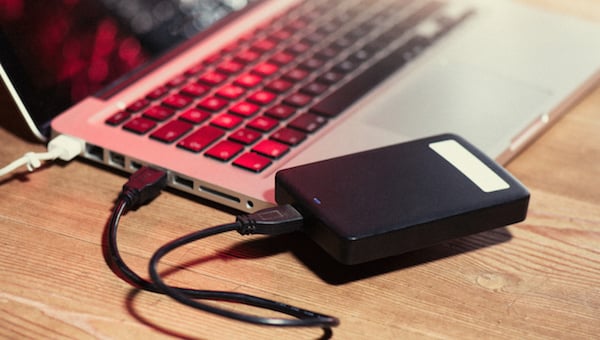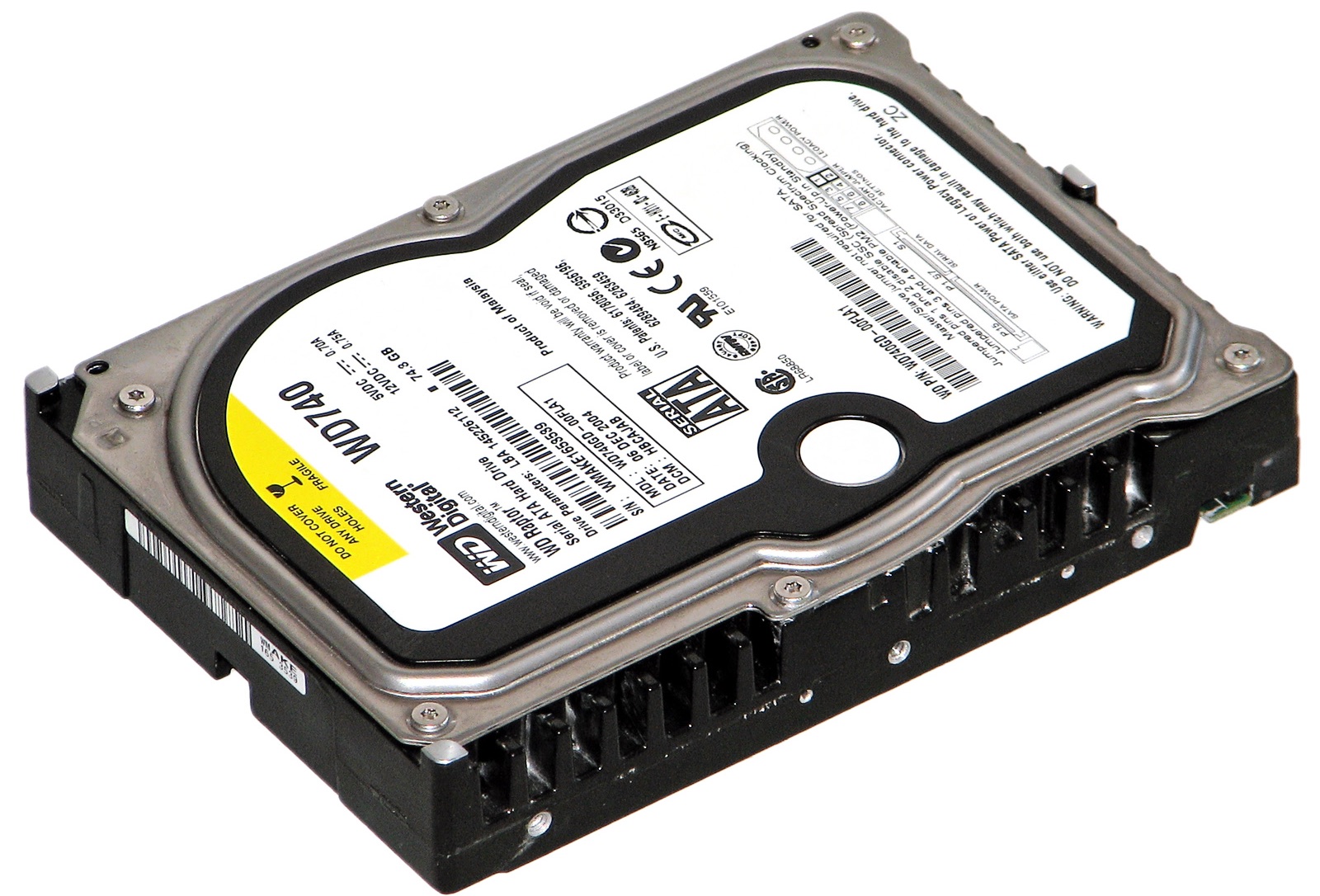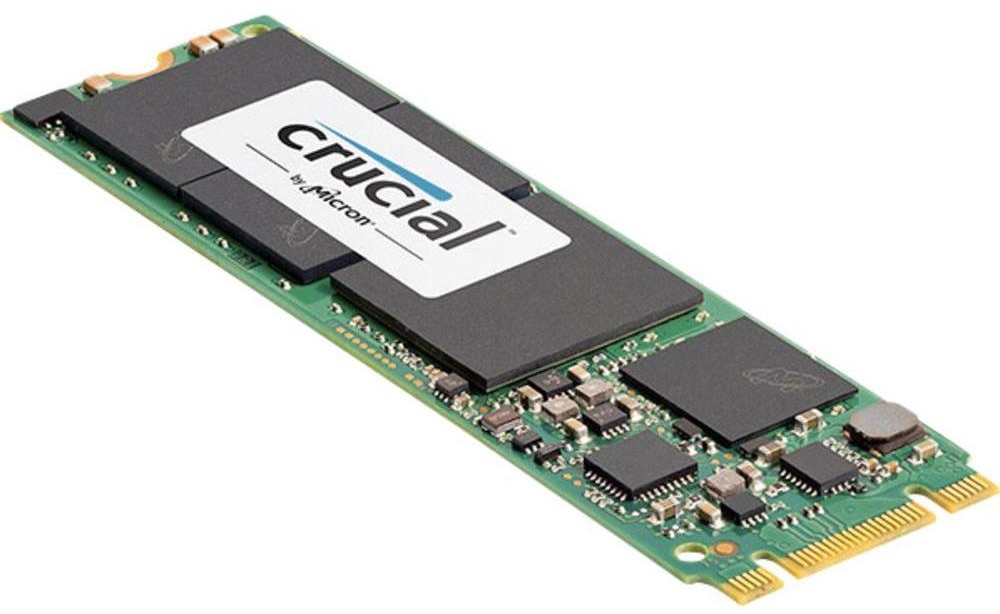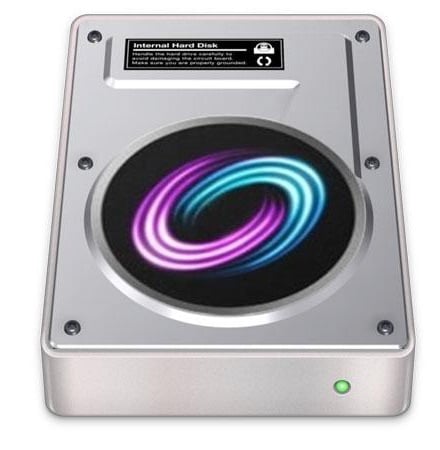How to Choose the Right Hard Disk for Your Mac
Posted on
by
Kirk McElhearn

Every computing device you own contains some sort of storage. An iPhone or iPad contains flash memory, and a desktop or laptop computer contains either a solid state drive (SSD), which is flash memory, or a hard disk. Macs are currently sold with three types of storage devices: hard drives (only in the base 21.5″ iMac and Mac mini), SSDs, and fusion drives. And you can buy external or internal drives of three types: SSD, hybrid (fusion) drive, or hard drive.
You might be curious to know, what’s the right hard disk for your Mac? Choosing which drive to use in a computer involves a trade-off between speed, capacity, and cost. In this guide, you will learn what the difference is between the different types of drives as well as the advantages and disadvantages of each.
Hard Disks

Ignoring the rise and fall of the floppy disk, for a long time, hard disks were the most common storage devices. They are reliable, have large capacities, and are relatively inexpensive. Of course, they weren’t always cheap. In 1985, Apple sold a 20 MB hard disk for the astounding sum of $1,495. This disk was a lot slower than current hard disks, spinning at only 2,744 RPM.
Current hard drives generally spin at 5,400 or 7,200 RPM, though there are some that are faster. (Performance is not just about speed, there are other features that can make a drive read or write data faster.) From the limited 20 MB storage devices sold in the 1980s, we have gone to the relatively common capacity of 4 TB (even 8 TB for hard drives). Disk manufacturers have released drives that are 10 and 12 TB, and we should even see a 16 TB hard drive later this year.
In terms of cost for storage, hard drives are the cheapest. As a disadvantage, however, they have moving parts, which means they are susceptible to failure if something goes wrong or if you drop a laptop containing a hard drive. They are also heavier and they make noise. This latter point may not bother most people, but I prefer not to hear anything spinning in my Macs.
Solid State Drives (SSDs)

Solid state drives, or SSDs, use flash memory to store data. When they’re built into a computer, in appearance they’re just a few chips on a circuit board. (You can also buy them in 2.5″ format to install in a laptop, or in an external enclosure.)
SSDs are compact, quiet and very fast, especially when you start up a computer or wake the computer (hard disks may go to sleep when not used for a certain time, and take a few seconds to spin up). SSDs also use less power, run cooler, are lighter, and have no moving parts, which makes them ideal for laptops.
If you drop a laptop when its hard drive is spinning, the drive can be damaged, and you can lose data. SSDs tend to be more reliable overall, and if they fail, you can still read data (unless the actual memory chips are damaged), whereas you may not be able to do this with a hard disk.
However, SSDs are much more expensive when you look at the cost to storage ratio. Currently, you can buy an 8 TB external drive for less than $150, whereas that amount of money will only buy you a 500 GB SSD.
Hybrid Drives

There is another kind of drive that combines the two technologies: the hybrid drive, or what Apple calls the fusion drive.
Hybrid drives combine a standard hard drive with an SSD element, usually from 6 to 128 GB. (Apple’s fusion drive has a 24 GB SSD in the 1 TB model, but the 2 TB and 3 TB drives have 128 GB SSD.) The drive copies the most frequently used files to the flash storage, so they can be accessed more quickly. This generally includes the operating system, apps you use often, and files you access regularly. The first time you boot and launch apps, files are read from the hard disk, and then moved to the SSD part of the drive; subsequently, accessing those files is much faster.
These drives offer a compromise between speed and storage, still being a bit slower than SSDs, but at a much nicer price point: You can buy a 2 TB hybrid drive with 6 GB SSD for less than $100. However, hybrid drives have all the disadvantages of hard drives, and only some of the advantages of SSDs.
Choosing the Best Hard Disk Drive
The speed and reliability of SSDs make them the ideal solution for today’s computers. Most people do not want a Mac without an SSD, because an SSD enables it to boot much faster, apps launch faster, and files copy more quickly. However, if you need much more storage than what an SSD can offer, perhaps because of a large media collection, you have two options: a hybrid drive, or an external hard drive.
On a new iMac that comes by default with a 2 TB fusion drive, you can pay an additional $200 to opt for a 512 GB SSD, or $600 more for a 1 TB SSD. (Going to 2 TB SSD is a whopping $1,400 extra.) And Apple’s laptops are only offered with SSDs.
If you consider that the cost of an external hard drive is around $100 for 2 TB, then picking the internal SSD and external hard drive will run you about $300 more than the fusion drive—but your Mac will run much faster.
I have found that the combination of an internal SSD and an external hard drive is the best compromise, since I don’t want a fusion drive (because of the noise and moving parts). If you do choose the fusion drive, you should avoid the 1 TB model, because of its smaller SSD element; it only has 24 GB compared to the 128 GB on the 2 TB and 3 TB models. The larger SSD element means more files can be cached, and your Mac will run a lot faster. Though if you only have simple needs—if you only use a few apps, and don’t work with big files—it won’t make a difference, and upgrading to the 2 TB fusion drive is an extra $200.
The Future of Disks
The future is flash. We’ll eventually see affordable SSDs at multi-terabyte sizes, and the choice will be simple: You’ll only buy a hard disk if you really need a lot of storage.
Prices are also dropping: The first Mac with an SSD was the 2008 MacBook Air, which boasted a 64 GB SSD that cost an extra $1,300. In early 2021, upgrading a 256 GB SSD to 1 TB only costs an additional $400.
In truth, however, there is no reason to buy a huge SSD, unless you work with very large files (such as video), or you need to carry lots of files with you on the road and cannot use a portable hard drive. Most of the files on a big SSD will just sit around, never being accessed, yet costing a lot.
For now, most Mac users can get by with 256 or 512 GB SSDs, and if you have lots of files, an external drive—or even the cloud—will save you money.
How can I learn more?
 Each week on the Intego Mac Podcast, Intego’s Mac security experts discuss the latest Apple news, security and privacy stories, and offer practical advice on getting the most out of your Apple devices. Be sure to follow the podcast to make sure you don’t miss any episodes.
Each week on the Intego Mac Podcast, Intego’s Mac security experts discuss the latest Apple news, security and privacy stories, and offer practical advice on getting the most out of your Apple devices. Be sure to follow the podcast to make sure you don’t miss any episodes.
You can also subscribe to our e-mail newsletter and keep an eye here on Mac Security Blog for the latest Apple security and privacy news. And don’t forget to follow Intego on your favorite social media channels: Facebook, Instagram, Twitter, and YouTube.